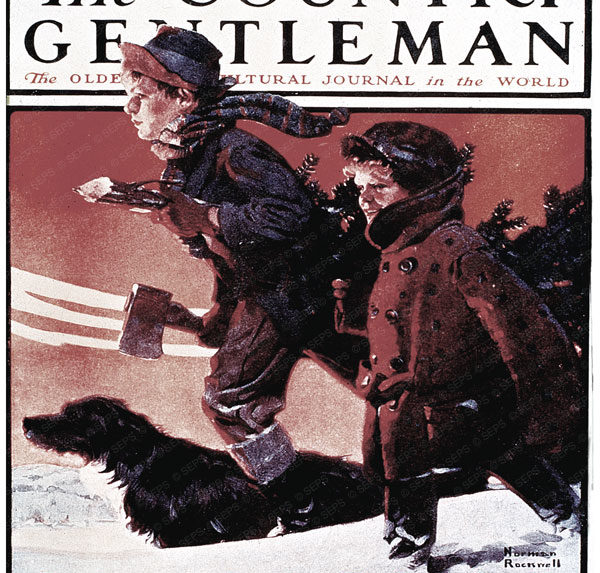Picking out the Christmas tree is a sweet and, at times, comical tradition for most families. In the Nov/Dec issue of The Saturday Evening Post (“Of Trees and Men”), humor writer Lori Borgman jokes, “Nothing says peace on earth and goodwill toward men like a man going up against a live Douglas fir with some strong language and a 16-inch STIHL chain saw.” While the scene sounds familiar to some, the Christmas tree farm doesn’t have to be a battleground for man vs. tree. Just follow these tips for selecting a fir that fits.
The ideal variety of tree that’s best for you depends on where you live. For example, Floridians scout for Red Cedars, Virginia Pines, Sand Pines, Spruce Pines, and Leyland Cypresses, while those on the West Coast look for Monterey Pines and Fraser Firs.
Size and shape, of course, depend on personal preference, but PickYourOwn.org offers a simple formula:
Room height – Size of tree topper – Height of tree stand – Base table under stand + Feet removed from bottom of tree = Height to buy at farm. Easy enough, right?
For example: If your living room is 8 feet high, your tree-topping star is 1 foot high, your tree stand is 1/2 foot high, you don’t use a base table, and you remove 1/2 foot of the bottom of the tree, then simple calculations allow you to buy a tree that’s 7 feet tall. (8 – 1 – .5 – 0 + .5 = 7)
Inspect your tree carefully:
To test the needles for resiliency, hold a branch 6 inches from the tip, then run your thumb and forefinger along the branch to make sure needles do not fall off in your hand. If only a few come off, the tree is considered fresh.
Evidence of a fresh tree can also be determined by its aroma and color. Well-hydrated trees retain their moisture content (and needles) and therefore remain more fragrant.
When buying from a choose-‘n’-cut farm, request that the farmer mechanically shakes the tree to eliminate dead needles. Also, make sure the limbs are strong enough to hold your ornaments and lights.
Handle with care:
If your trip from the farm to home takes you more than 15 minutes, it’s best to wrap the tree in a tarp to prevent wind damage on the highway. Don’t have a truck or camper to carry the tree? Not a problem: Tie it securely to the outside of your vehicle. To prevent needles from flying all over the highway, make sure the tree trunk is facing forward.
Before placing the tree in its stand, make a fresh, perpendicular cut about 1 inch from the bottom of the trunk. If you don’t feel comfortable sawing the tree yourself, ask your retailer to do it before bringing it home. Make sure your stand is big enough to support your tree, and don’t cut to fit. Cutting away the outer layer of the trunk affects its ability to absorb water. Always make sure your tree has plenty to drink. A well-hydrated tree will stay healthier longer, and your home will be filled with that fresh pine scent synonymous with the holiday season.
Tree not really your thing? Perhaps a simple wreath will do. We came across some truly crafty designs at decor8blog.com.
Happy holidays!
Become a Saturday Evening Post member and enjoy unlimited access. Subscribe now




Comments
“…where nature put me in land and air.”
You’re kidding, right? Most are planted by HUMANS on tree farms, silly tree hugger. I suppose we shouldn’t harvest corn or soy beans or wheat or tomatoes or hay… haha.
There are countless tragic tales
Carried in the seasonal wind,
And the whole forest of us wails.
How many tree lives soon to end?
Humans come cut us down in prime,
Treenap us to their lairs to be
Their slaves for their holiday time,
Then toss us out – just a dead tree.
There are ET trees so I’ve heard.
And if they come and take command,
Humans can stick in stands absurd.
Maybe then they will understand.
The perfect Christmas tree is where
Nature put me in land and air.